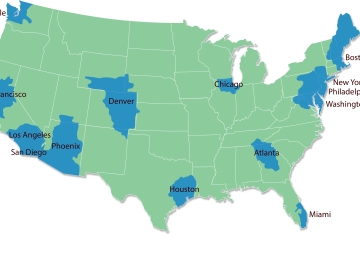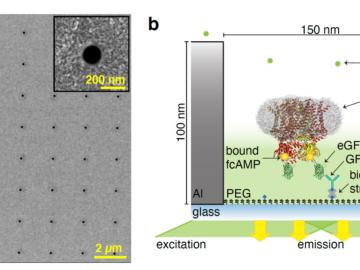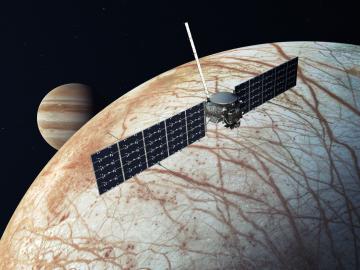
Filter News
Area of Research
- Advanced Manufacturing (2)
- Biology and Environment (12)
- Computational Engineering (2)
- Computer Science (5)
- Energy Science (24)
- Fusion and Fission (4)
- Isotope Development and Production (1)
- Isotopes (2)
- Materials (29)
- Materials for Computing (4)
- Mathematics (1)
- National Security (10)
- Neutron Science (6)
- Nuclear Science and Technology (4)
- Sensors and Controls (1)
- Supercomputing (28)
News Type
News Topics
- (-) Artificial Intelligence (51)
- (-) Clean Water (16)
- (-) Microscopy (28)
- (-) Partnerships (33)
- (-) Quantum Computing (18)
- (-) Security (13)
- (-) Space Exploration (13)
- 3-D Printing/Advanced Manufacturing (82)
- Advanced Reactors (25)
- Big Data (25)
- Bioenergy (42)
- Biology (47)
- Biomedical (28)
- Biotechnology (14)
- Buildings (36)
- Chemical Sciences (48)
- Composites (23)
- Computer Science (105)
- Coronavirus (28)
- Critical Materials (23)
- Cybersecurity (20)
- Education (3)
- Element Discovery (1)
- Emergency (1)
- Energy Storage (75)
- Environment (86)
- Exascale Computing (14)
- Fossil Energy (2)
- Frontier (17)
- Fusion (26)
- Grid (38)
- High-Performance Computing (44)
- Hydropower (6)
- Irradiation (2)
- Isotopes (25)
- ITER (5)
- Machine Learning (27)
- Materials (96)
- Materials Science (90)
- Mathematics (3)
- Mercury (5)
- Microelectronics (1)
- Molten Salt (8)
- Nanotechnology (41)
- National Security (21)
- Neutron Science (81)
- Nuclear Energy (47)
- Physics (30)
- Polymers (23)
- Quantum Science (43)
- Simulation (19)
- Statistics (2)
- Summit (30)
- Transportation (62)
Media Contacts

ORNL's Larry Baylor and Andrew Lupini have been elected fellows of the American Physical Society.

A team from ORNL, Stanford University and Purdue University developed and demonstrated a novel, fully functional quantum local area network, or QLAN, to enable real-time adjustments to information shared with geographically isolated systems at ORNL

Oak Ridge National Laboratory worked with Colorado State University to simulate how a warming climate may affect U.S. urban hydrological systems.

A research team at Oak Ridge National Laboratory have 3D printed a thermal protection shield, or TPS, for a capsule that will launch with the Cygnus cargo spacecraft as part of the supply mission to the International Space Station.

Researchers working with Oak Ridge National Laboratory developed a new method to observe how proteins, at the single-molecule level, bind with other molecules and more accurately pinpoint certain molecular behavior in complex

Researchers from NASA’s Jet Propulsion Laboratory and Oak Ridge National Laboratory successfully created amorphous ice, similar to ice in interstellar space and on icy worlds in our solar system. They documented that its disordered atomic behavior is unlike any ice on Earth.

Sergei Kalinin, a scientist and inventor at the Department of Energy’s Oak Ridge National Laboratory, has been elected a fellow of the Microscopy Society of America professional society.

The Department of Energy’s Oak Ridge National Laboratory has licensed its award-winning artificial intelligence software system, the Multinode Evolutionary Neural Networks for Deep Learning, to General Motors for use in vehicle technology and design.

Researchers at Oak Ridge National Laboratory have identified a statistical relationship between the growth of cities and the spread of paved surfaces like roads and sidewalks. These impervious surfaces impede the flow of water into the ground, affecting the water cycle and, by extension, the climate.

To better understand the spread of SARS-CoV-2, the virus that causes COVID-19, Oak Ridge National Laboratory researchers have harnessed the power of supercomputers to accurately model the spike protein that binds the novel coronavirus to a human cell receptor.


